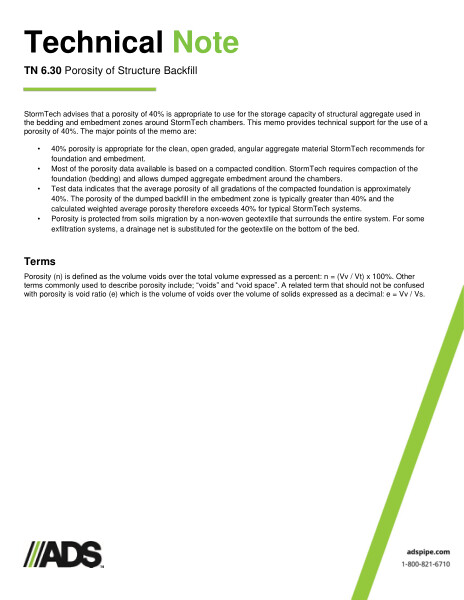TN 6.30 Porosity of Structure Backfill
Filename:
TN 6.30 Porosity of Structure Backfill.pdf

This Porosity of Structure Backfill technical note provides definitions, terms, references and tables to explain porosity.
Porosity (n) is defined as the volume voids over the total volume expressed as a percent: n = (Vv / Vt) x 100%. Other terms commonly used to describe porosity include; “voids” and “void space”. A related term that should not be confused with porosity is void ratio (e) which is the volume of voids over the volume of solids expressed as a decimal: e = Vv / Vs.
StormTech advises that a porosity of 40% is appropriate to use for the storage capacity of structural aggregate used in the bedding and embedment zones around StormTech chambers. This memo provides technical support for the use of a porosity of 40%. The major points are: 40% porosity is appropriate for the clean, open graded, angular aggregate material StormTech recommends for foundation and embedment.
Most of the porosity data available is based on a compacted condition. StormTech requires compaction of the foundation (bedding) and allows dumped aggregate embedment around the chambers. Test data indicates that the average porosity of all gradations of the compacted foundation is approximately 40%. The porosity of the dumped backfill in the embedment zone is typically greater than 40% and the calculated weighted average porosity therefore exceeds 40% for typical StormTech systems. Porosity is protected from soils migration by a non-woven geotextile that surrounds the entire system. For some exfiltration systems, a drainage net is substituted for the geotextile on the bottom of the bed.
Table 1 is the compilation of known test data with categories of sample, data source, porosity, bulk density and test/description.
Porosity references are given at the end with a cross section of the chamber system.
